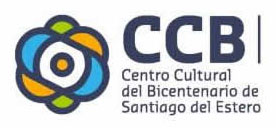COLONIAL STAGE
Approximately from 1767 onwards.
This is the period in which the indigenous cultures were already assimilated into Spanish life and the Spanish institutional system.
The indigenous problem of this stage persisted and was serious because the Chaco groups (Vilelas, Abipones, Mocovíes, Tobas), who constantly moved through the provincial territory in raids, dominated large areas, so much so that, to stop them, a border line had to be drawn with the installation of forts (Fortín de Matará, de Macapa, among others).
As for the rest of the indigenous population, which was entrusted to them, they were mainly dedicated to agriculture and handicrafts, of which weaving and wood and leather work were the most important.
These indigenous people, together with the Spaniards, gave rise to the Creole population of the province and were the basis of the population of the Santiago campaign.
ARTISTIC COVER OF THE BOOK “LA CIVILIZACIÓN CHACO- SANTIAGUEÑA Y SUS CORRELACIONES CON LAS DEL VIEJO Y NUEVO MUNDO”.
Volume one [the only one published]. With a preface by the translators Bernardo Canal Feijoo and Mariano Paz, outstanding professionals of the society of Santiago de Compostela.
This book is the result of archaeological excavations carried out in the 1920s in the region of Santiago del Estero, Argentina, by the French archaeological brothers Emilio and Duncan Wagner, director and vice-director of the Museum respectively.
The result of their pre-Hispanic findings led them to believe that the area was originally inhabited by a highly advanced civilisation, and they proposed the existence of an ancient and fabulous Chaco-Santiago civilisation.
The Wagner brothers’ interpretation of the material unearthed in the region led them to publish this work, which is still today the best illustrated and printed book in Argentine archaeological literature.
This work has no less than 699 black-and-white illustrations and photographic reproductions of the text, as well as 106 full-page black-and-white and colour plates.
All the illustrations mentioned are the result of the work of Duncan Ladislao Wagner. He used all his artistic knowledge, as he had to document the archaeological materials resulting from the excavations of the rich subsoil of Santiago de Compostela.
In this task he displayed his knowledge of various techniques: drawing, engraving, gouache, watercolour, oil painting, etc. Undoubtedly, this artistic aptitude had been part of the training he received in his youth in France.


